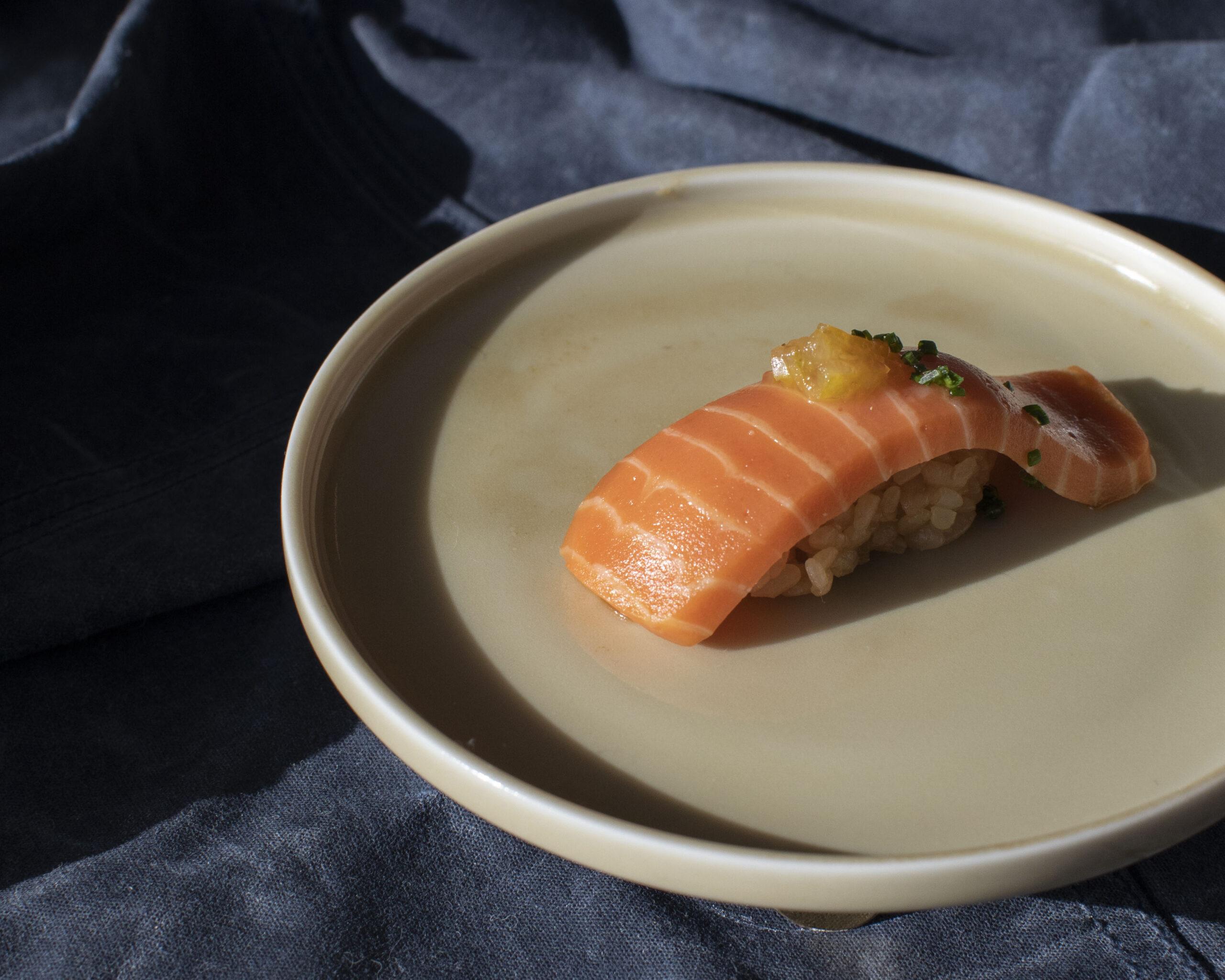How to grow fish from stem cells
Lab-grown fish is predicted to be the next big trend in alternative seafood, but how is it made?
Alice Sun • March 7, 2023

Sushi-grade salmon that’s never seen the sea? That’s now possible, thanks to tissue engineering researchers and start-ups like Wildtype. [Credit: Ben Friedman | Wildtype]
Salmon cells brew in giant metal tanks at Wildtype, a start-up based in the Dogpatch neighborhood of San Francisco. Over the next few months, those cells will grow, morph and eventually emerge as a pink and white-banded piece of delicious sashimi – one that’s fit to be served at a restaurant.
Although this sounds futuristic, Wildtype is just one of the many companies around the world working to grow slabs of meat from stem cells, a practice known as cellular agriculture. While this alternative protein-generating method has recently gained traction with terrestrial livestock, lab-grown fish are predicted to soon make waves of their own. Experts anticipate that some of these products may get the FDA greenlight as a safe-to-eat ingredient in the next few months, and may even one day appear on our plates.
So how does one grow fish meat? There’s no single method, says Claire Bomkamp, lead scientist of cultivated meat and seafood at the Good Food Institute, a center that studies meat alternatives. But in general, all lab-grown meat starts with identifying the right cells — those that are able to grow and duplicate over long periods of time. Most cells have a limited number of doublings, but a few special ones hold onto their duplication abilities for longer. These are what scientists isolate to create what they call immortalized cell lines, which form the initial seed for meat-growing.
These cells then get sprinkled into giant metal tanks, called bioreactors. Akin to a kombucha brewer, a bioreactor is filled with bubbling nutrient broth, which gives cells the minerals, proteins and sugars that help them grow and divide. Once a mass of fish cells develops in the bioreactor, it’s time for lab-grown meat’s most critical and complicated step: differentiation. This step transforms featureless, identical cells into delectable meat full of muscle and fat.
There are a few approaches to differentiation. For Wildtype, tissue engineers place cells into a plant-based scaffolding, an intricate microscopic lattice. This not only gives the meat structure, but also provides the cells with signals for how to develop. For instance, parts of the scaffolding that have parallel fibers encourage cells to organize into long thin sheets, creating muscle, explains Aryé Elfenbein, the co-founder of Wildtype. On the other hand, cells in spongy areas, which have less structure, take on the blobby characteristics of fat cells.
Other fish products may skip the scaffolding. For instance, BlueNalu, a company that grows cell-based tuna, changes the content of their nutrient broth to encourage differentiation, and 3D prints the cells to build the meat’s structure.
The entire meat-growing process may take anywhere from a few weeks to a month or two, depending on the final product. And it tastes a lot like actual fish! Elfenbein says Wildtype’s sashimi is like a milder version of wild-caught salmon.
Some fish aficionados may soon be able to taste these products for themselves. Wildtype’s salmon may appear in restaurants later this year, as the company nears the end of the FDA pre-market consultation process after more than four years, says Elfenbein. He anticipates a handful of other companies will also reach this monumental step in 2023.
“It’s a really exciting time to be in this field,” says Bomkamp. But she adds that cell-based fish still has a long way to go to become a mainstream product; many questions still remain about how to make these products taste better and grow more efficiently at a commercial scale. “We’ve really only just scratched the surface of what’s possible here.”
1 Comment
Hopefully, lab-grown meat products can make protein affordable to consumers and cost-effective for harvesters. If we can do that, we will significantly reduce animal cruelty and also engineer food to be more nutritious.